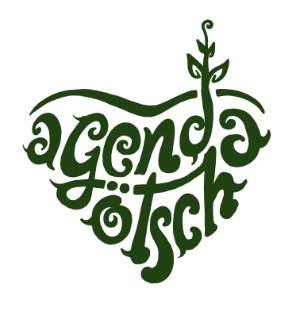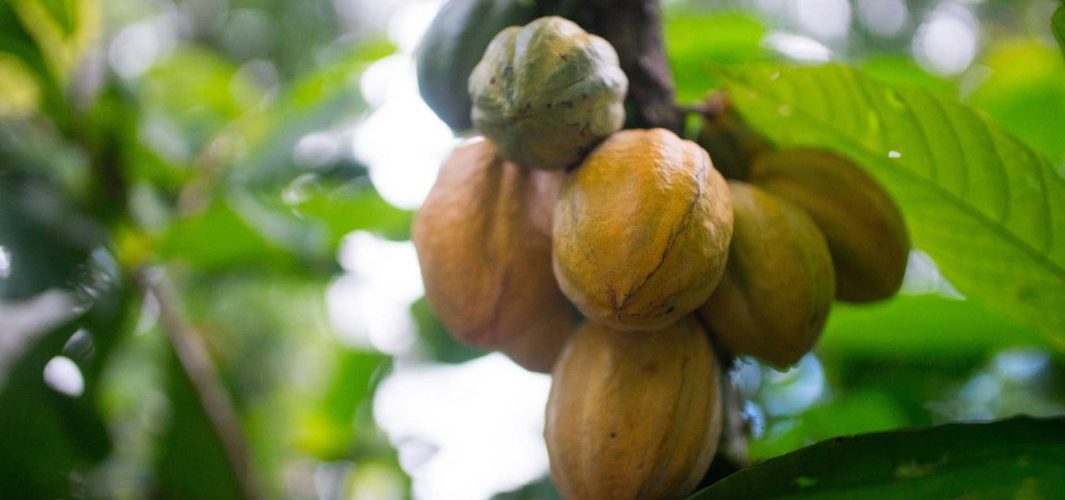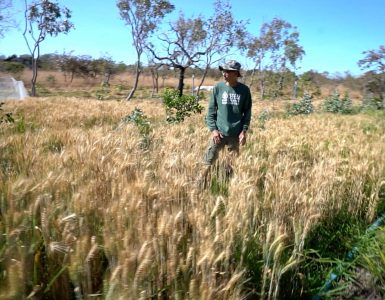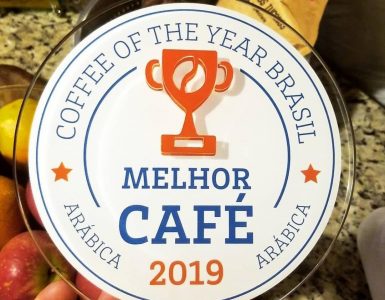In Ernst Götschs’ agriculture, holes become NESTS, seeds become GENES, weeding becomes HARVESTING, competition gives way to COOPERATION and pests become the “AGENTS OF THE DEPARTMENT OF OPTIMIZATION OF LIFE PROCESSES”.
The peculiar (and already classic) vocabulary of Ernst Götsch features a coherence of form, function, ideology and behavior. It’s “Agents of Oversight” may appear no more than a provocative notion, yet it’s hard to resist putting these concepts to the test and evaluating their legitimacy. Let’s take a look at some of the history behind his concepts and vocabulary.
The case of the Witch's Broom
This case is an example that helps to explain what’s behind the intriguing concept of “Agents of the Department of Optimization of Life Processes” which is how Ernst Göstch refers to pests.

To understand how and why Götsch arrived at this name it’s worth looking at a little of his personal history
In the nineteen-seventies, when Gösch worked with plant genetics in Switzerland, his focus of study was on forage plants and the search for genotypes that were more resistant to disease. Beyond the acknowledgments that his research received, it was during this period that Ernst posed the question: “Could we achieve better results if we were to find ways of cultivating crops that provided the conditions for best growth, rather than creating genotypes that support the poor treatment to which we submit them?”
At the risk of compromising his previous genetic research, Ernst began to obstinately test his hypotheses in different climates and conditions around the world including north Switzerland, southern Germany, Costa Rica, the high plains of Bolivia and the diverse biomes of Brazil.
Could we achieve better results if we were to find ways of cultivating crops that provided the conditions for best growth, rather than creating genotypes that support the poor treatment to which we submit them? – Götsch

The way Ernst Götsch reacted to the cacao crisis that began at the end of the nineteen-eighties, which affected all production in southern of Bahia was a test in which his ideas would be proven correct.
During this time, around 600 thousand hectares of cacao plantation were affected by witches’ broom (C. Perniciosa). The region, which was known as a top producer of the high quality “Cocoa type 1” or “Bahia Cacao Superior”, saw its participation in the international market fall from 14.8% to the current 4%, according to the data from the United Nations Food and Agriculture Organization (*1)
This story has a tragic twist which has left those affected searching until today for those responsible for the apparently deliberate introduction of the disease (*2).
ATTEMPTS TO FIGHT THE WITCH’S BROOM
Controversies aside, to deal with the problem the Executive Committee on Cacao Farming attempted to help the cacao producers through the application of various techniques to combat the disease. Techniques included the application of pesticides, herbicides, prohibition of production in certain areas, drastic pruning and canopy clearance as well as typical cloning solutions. None of these attempts obtained significant results in the control of the disease. The one method which provided any results at all was the deforestation of large tracts of Atlantic Rainforest.
During this time, 70% of the cacao in the region was produced by the Cabruca system in which the cacao tree is shaded by native tree species. Due to this, the only successful attempts for the eradication of the witches’ broom were responsible for the cutting of native trees within the biome, such as the Jacarandá, Cedro, Jequitibá and Ipê. All tested methods which were sanctioned under the express and auspicious technical recommendation of the Cacao Committee proved in the end, to be ineffective (*3).
Ernst Götsch was also growing cacao during the same period and in the same area. However, the narrative that he tells about the same witches’ broomstick is disconcertingly different.

Cocoa and witch-broom coevolved, we have to consider this -Götsch
Ernsts’ thought process was not bound to any conventional train of thought or growing method. This allowed him to observe the interaction between the fungus and the plant to understand its logic and dynamic. Ernst was accustomed to dealing with diseases and attacks from pests without combating them with fungicide or pesticide. He looked to evaluate the relationship, the goal being, to see if behind the event there might be some beneficial motive for the forest system.
It was with this disposition that he observed the witches’ broom in his cacao stands. Taking into consideration that the cacao and the witches’ broom co-evolved throughout history, he realized that they may be able to live in balance with one another.
Through this new lens, in a place where everyone else saw an attack from a pest, Ernst permitted himself to see a sign of the necessity for management. The pruning he conducted after the observation of the witches’ broom improved the resistance of the cacao guaranteeing his production. It also dispensed with any need for agro-additives chemical or biological. It is important to realize that he passed up defensive agro-additives not out of dogmatic or ideological impulse, but rather out of the search for solutions that are most efficient and, that produce the best results.
Seen from this point of view, the pest comes to have a function that contributes to the betterment of the general environmental conditions in which a plant grows. So, it doesn’t make sense to call them pests or weeds but rather “AGENTS OF THE DEPARTMENT OF OPTIMIZATION OF LIFE PROCESSES”.
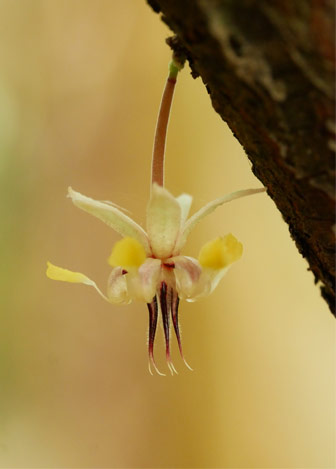

For Göstch, pruning oriented by the “Agents” promotes the “Optimization of Life Processes” and with this “the pests function stops being necessary, so the agents “remove themselves”. In fact, informed pruning – among other effects- has a rejuvenating quality on the plantation and, with this breaks the life cycle of the fungus naturally, or rather “it removes itself”.
The example of the cacao and the witches’ broom is just one among many which illustrate and verify this concept. The same logic can be applied in the relation between crickets and beans, boar and corn, cutter ants and manioc, the Pupunha palm fruit and strong winds etc. – all real stories and experiences in the field. All this remains within the shared perception of scientists that have arrived at similar conclusions to Götsch. The Austrian naturalist Viktor Schauberger, for example, at the beginning of the 20th century, already called parasites the “sanitation police of nature” (*4). In the 1940’s, the pioneer of organic agriculture Albert Howard also referenced pests and diseases as “Agents of Oversight” (*5). The theory of Trofobiose of Chaboussou launched the basis in the 1970’s for the understanding that the plant is only attacked when it is in a nutritional disequilibrium.
Aside from all the scientific foundation which supports this vision, we cannot forget to appreciate the potential for the breaking of popular practice and perception that these displacements of reasoning promote. Just like poetry destabilizes pre-established concepts, inspires reflection and, in this case, questions our place within the environment in which we live, Göstchs’ findings help us understand that new solutions are possible.
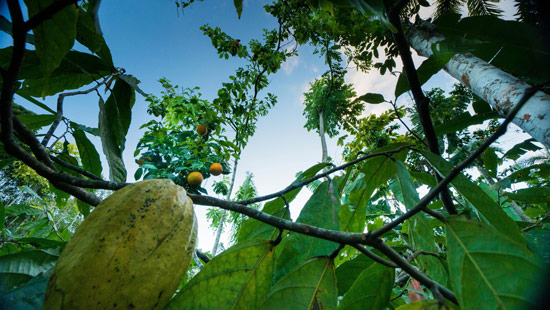
Translation: Michael Grueter
References
*1(TAFANI, 2012) -. Cacao Market Information – Ministry of Agriculture, Livestock and Supply – Executive Committee on Cacao Farming – 06/15/2012, year III nº15 – Brasilia, 2012. Available here
*2 “In Bahia, there is considerable evidence that the disease was not solely introduced but also was spread through human action, after the initial infections established themselves. Further, the occurrence of two distinctive instances of the disease, in Uruçaca and Camacan, suggests that there was more than just the introduction of infected material. The pathogen was brought directly to the center of the cacao region”. In “Doença vassoura-de-bruxa na Bahia: tentativas de erradicação e contenção” – Authors J.L Pereira, L.C de Aldeida and S.M. Santos – Center of Cacao Research, Ceplac, Bahia-Brazil,1996.
*3 “The utilization of pruning in the sense of reducing the availability of a source of inoculation in the tree, aiming to maintain the disease at a level less compromising should be considered as a technique agronomically impractical, onerous and inefficient” – Document edited and published in 1990 by Ceplac, entitled,” Avaliação sobre o desenvolvimento das atividades de controle da vassoura-de-bruxa na Bahia”.
*4 “‘Natures’ Health Police’ whose job it is to remove all genetically degenerate organisms in order to safeguard the future.” COATS, Callum. “Living Energies”. Dublin: Gill&Macmillan, 2001. p. 228.
*5 Albert Howard 1940, p.161. “An agricultural Testament”
